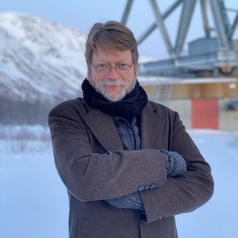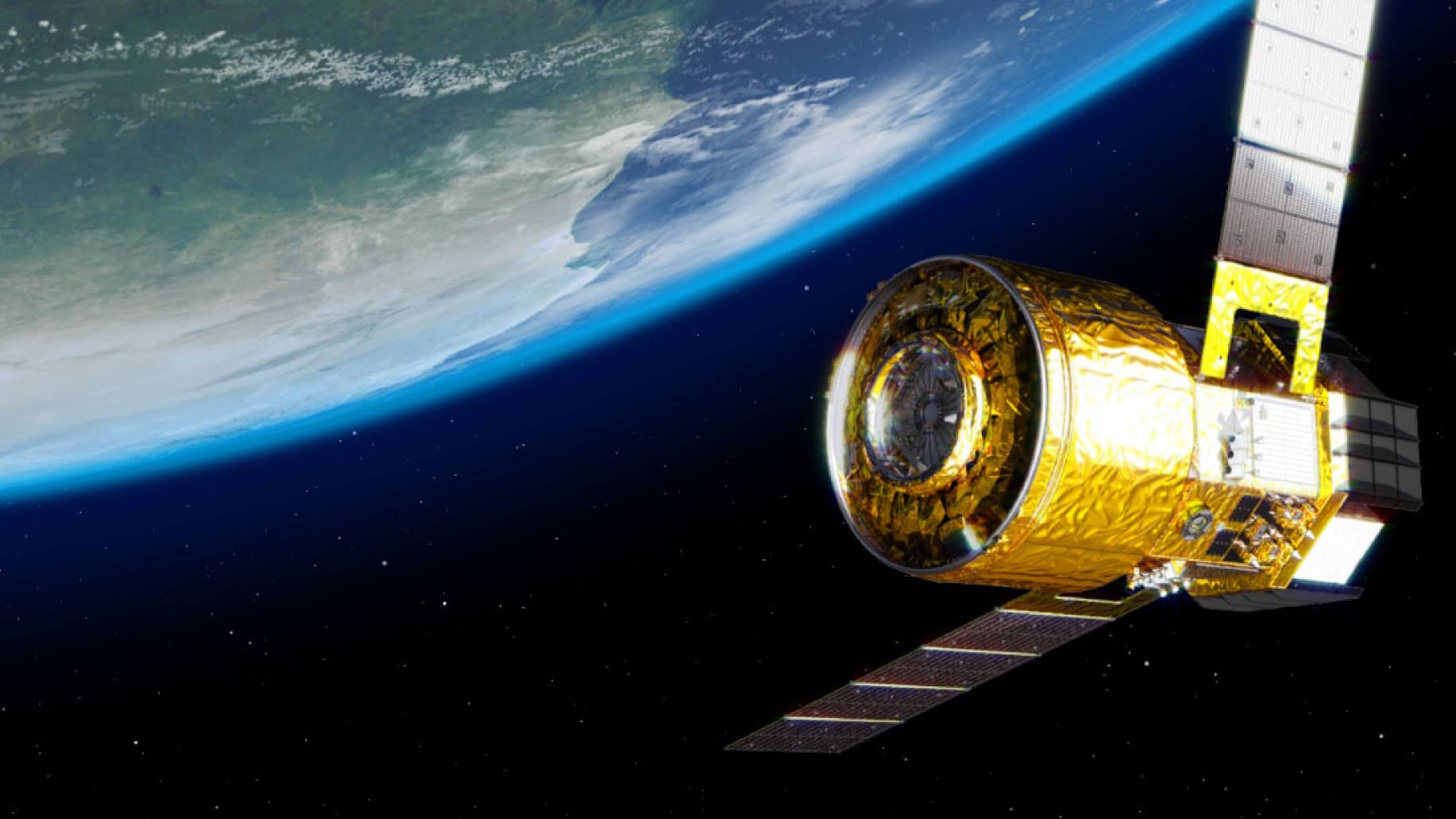A Shadow of Ourselves
As thesearch for extraterrestrial intelligence (SETI) enters a new phase, with therecent start of observations for radio signals from other worlds with the SETIInstitute's Allen Telescope Array, the international scientific community hasbegun preparing all the more earnestly for the cascade of events that wouldfollow the detection of an alien civilization. Among the most importantquestions humankind will ponder on that day is whetherwe should reply, and if so, what we should say.
If such asignal from the stars bears a readily intelligible message, some of our choicesmay be laid out for us. Perhaps, some have argued, a message fromextraterrestrials will include their suggestions for a reply. After all, thereasoning goes, they will probably have made contact with many othercivilizations before us, so they will be well versed in the productive firststeps in interspecies communication.
Personally,I am skeptical that we will be able to decode a message from another world withease. But whether we know what they are saying, or whether we only haveevidence that intelligence exists beyond Earth, if we choose to reply, we willneed to decide what we should say about ourselves.
Olderneighbors
But whatcould we say that would be of interest to extraterrestrials?
Before weanswer that question, we must acknowledge that any extraterrestrials we makecontact with may well be thousands or millions of years moreadvanced than we are. Why do SETI scientists assume this? Because for our search to succeed, it needs to be true.
If thegalaxy is populated only by young civilizations that have the capacity forinterstellar communication for only a few decades before they destroythemselves or simply lose interest in making contact with other worlds, then wewill effectively be isolated, alone in the universe. If other civilizationstransmit evidence of their existence for only a few decades ? the length oftime that humans have been capable of interstellar communication ? and thenthey lose the interest or ability to make contact, it's extremely unlikely thatthe precise time they are transmitting and the time that we are listening willcoincide. On a galactic scale, where time is measured in billions of years, itis extremely unlikely that these two "blips" would happen at the sametime. This would be as unlikely as two fireflies each lighting up once, atexactly the same time, during the course of a long, dark night. The chance thatboth would flash on simultaneously is virtually zero; it's more likely their flashes would be separated by minutes or hours.So too is it unlikely that two short-lived civilizations that had evolvedindependently of one another would come into being at almost precisely the sametime in the fourteen billion year history of our galaxy.
Breaking space news, the latest updates on rocket launches, skywatching events and more!
If we hearfrom a distant civilization, on purely statistical grounds it's very likely theywill be our elders.
Imagesof light and darkness
The mostdetailed messages thus far sent to another civilization were the recordingsborne by two Voyagerspacecraft, which will continue to drift between the stars for millions ofyears after having completed their primary mission of planetary explorationwithin our solar system.
Perhaps themost striking commonality of the more than a hundred pictures and drawings onthe Voyager recordings is that their depictions of humankind are universallypositive. The photographs abound with images of family and cooperation. Butnowhere in these images do we see direct evidence of humanity's darker side.Absent are any images of poverty or war, of environmental degradation orgenocide.
Presentingthe positive side of life on Earth in the Voyager recordings was a naturalattempt to put our best foot forward. But, I would argue, perhaps the mostimportant contribution we could make in an interstellar conversation would beto acknowledge those parts of ourselves that we are least proud of.
If anothercivilization is much older than we are, it will have made its way through thebottleneck of technological adolescence, where a civilization'sself-destructive capacity outweighs its social maturity. We may be in a poorposition to advise another civilization about how to be morewise. But we are quite well-suited to provide a reminder of what life islike for a civilization that does not have the confidence that it will continueto exist into the coming centuries and millennia. Our greatest contribution toan interstellar dialogue may come, not by emphasizing our accomplishments andvirtues, but by recognizing our foibles and frailties. And in the process, wemay learn important lessons about ourselves.
Acknowledgingour shadow
Thepsychoanalyst Carl Gustav Jung believed that maturity depends on an ability toconnect with our "shadow" side: those aspects of ourselves wenormally try to hide from. "Unfortunately, there can be no doubt that manis, on the whole, less good than he imagines himself or wants to be," Jungwrote. And the consequences of not facing our shadow side are ominous."Everyone carries a shadow," Jung continued, "and the less it isembodied in the individual's conscious life, the blacker and darker it is. Ifan inferiority is conscious, one always has a chance to correct it .... But if it is repressed and isolated fromconsciousness, it never gets corrected."
We mightwell imagine a more comprehensive message than the Voyager recordings that gaveadditional details about our cultures but failed to highlight the currentthreats to our environment, the costs of war, or the strife between nations andethnicities. But might not such an attempt to put the best face on our currentsituation unintentionally reveal a potentially far more dangerous fault ofhumankind: a tendency to hide from our own problems and to avoid these threatsto our very existence?
Some havesuggested that the greatest value of contacting other civilizations may be achance to glimpse into our future. If we learn that other civilizations havebeen able to survive through their technological adolescence, we would have newreason to hope that our own civilization will survive as well.
But even ifwe never makecontact with another world, the process of preparing for contact may helpus become better, more integrated humans. By reflecting on how we would portrayourselves to other worlds, we also have an opportunity to grow in our ownself-understanding. And part of that increased self-understanding can comeabout through a recognition of those aspects ofourselves that we would rather not be true, but that are a part of ourselves.
In a sense,the composition of messages to other worlds becomes a process not merely ofbeing in touch with alien worlds beyond, but of unknown worlds within. And suchan exploration into our souls requires as much fortitude as does building andsustaining telescopes that will search the stars for decades and centuries, seekingevidence of life beyond Earth. As we look within, let's not forget to look atthose parts of ourselves that we would rather look away from. As Jung remindedus, "no one can become conscious of the shadow without considerable moraleffort. To become conscious of it involves recognizing the dark aspects of thepersonality as present and real. This act is the essential condition for anykind of self-knowledge."
Douglas Vakoch is the Director of Interstellar Message Compositionat the SETI Institute and Chair of the Faculty at the California Institute ofIntegral Studies.
- VIDEO: Figure the Odds of E.T.!
- All About SETI
- GALLERY: Scenes from SETI@Arecibo
Join our Space Forums to keep talking space on the latest missions, night sky and more! And if you have a news tip, correction or comment, let us know at: community@space.com.

Douglas Vakoch, Ph.D., is President of METI International, a nonprofit research and educational organization dedicated to transmitting intentional signals to nearby stars, as well as fostering sustainability of human civilization on multigenerational timescales—a prerequisite for a project that could take centuries or millennia to succeed. Dr. Vakoch is a frequent science commentator on television programs that explore astrobiology - the hunt for life in the cosmos, including the Search for Extraterrestrial Intelligence (SETI). His expertise includes space exploration, the societal impact of science, COVID-19, and environmental threats to humanity's long-term survival. He has published more than two dozen books covering the search for life beyond Earth, COVID-19, the psychology of space exploration, transgender studies, ecofeminism, sustainability, and science fiction.
